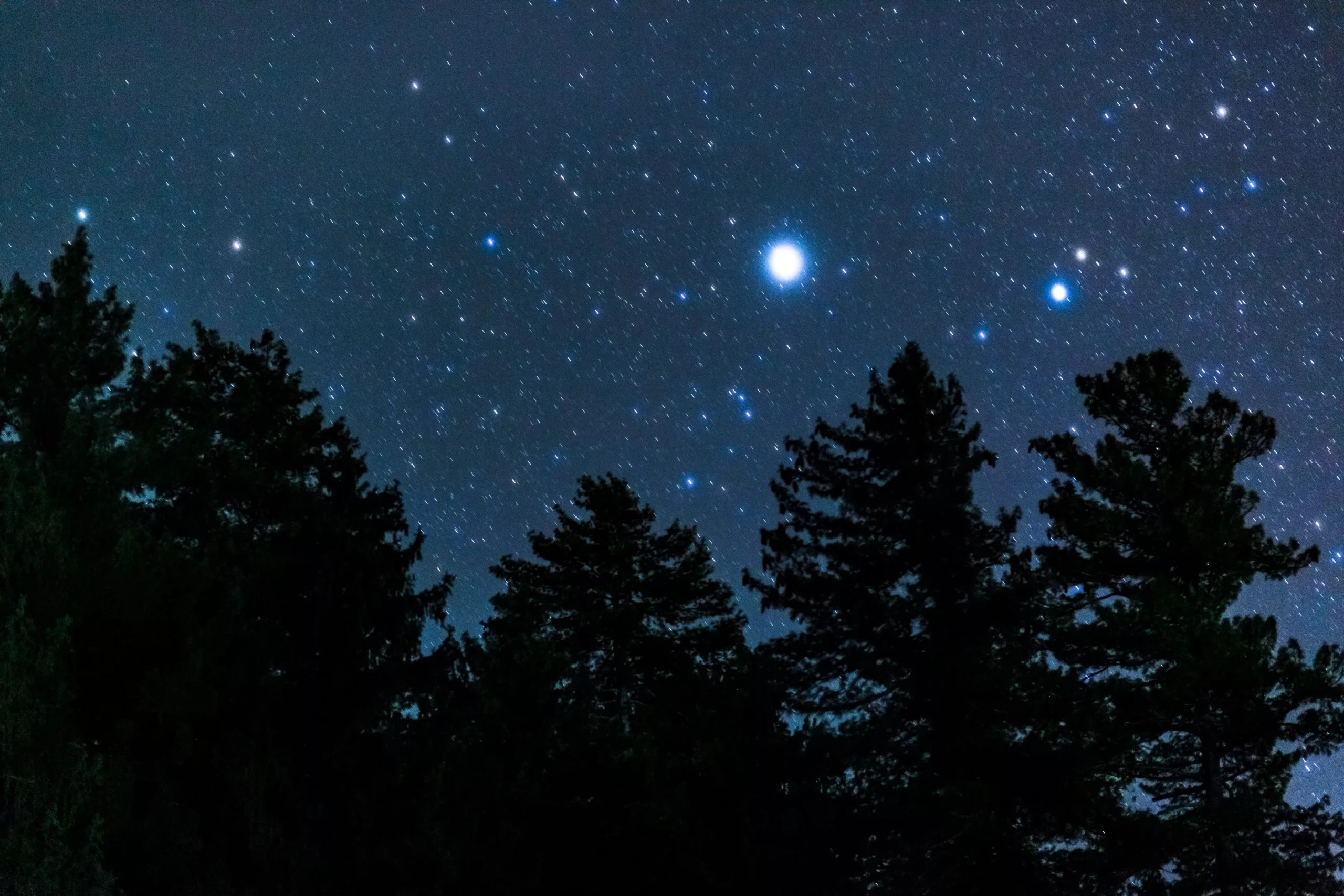In the coming months, the world is set to witness an extraordinary celestial event as a massive explosion in the T Coronae Borealis star system is poised to create a “new star” in the night sky.
This rare astronomical event, expected to occur between now and September 2024, is not the birth of a star but rather an extraordinary nova outburst from T Coronae Borealis (T CrB), situated 3,000 light-years away in the constellation of Corona Borealis.
NASA described the anticipated nova outburst as a “once-in-a-lifetime viewing opportunity” as T Coronae Borealis is predicted to become as bright as the North Star, Polaris.
T Coronae Borealis, also known as the “Blaze Star,” is a binary star system comprising a white dwarf and a red giant star. Due to the stars’ proximity at certain times in their orbital periods, the system experiences a nova explosion approximately every 80 years.
As the companion stars orbit close to each other, the red giant, which is in a later stage of its life, begins to shed its outer layers. The white dwarf, a dense remnant of a star that has exhausted its nuclear fuel, captures this material through its gravitational pull.
This violent celestial dance between the cosmic duo eventually triggers a runaway thermonuclear reaction on the surface of the white dwarf, leading to a dramatic nova outburst.
T Coronae Borealis is part of a unique category of dramatic astronomical phenomena called “recurrent novae.” This term describes star systems that experience nova explosions at regular intervals we can observe and predict. This phenomenon is incredibly rare, with astronomers and scientists having identified only five recurrent novae in our galaxy.
The last nova outburst by T Coronae Borealis occurred in 1946, making the anticipated 2024 event a remarkable once-in-a-generation opportunity for skygazers.
The impending nova is expected to elevate T Coronae Borealis from its usual magnitude of +10, barely visible even with binoculars, to a striking magnitude of +2. This sudden increase in brightness will provide an unmissable opportunity to witness a “new star” suddenly emerge in the night sky.
The appearance of novae, or “new stars,” in the night sky has historically held significant cultural, philosophical, and scientific influence. In antiquity, these celestial phenomena were often interpreted as omens or divine signals, reflecting the prevailing worldview that the heavens were a realm of the gods and that celestial events were messages to be deciphered.
One of the most famous historical novae is the supernova SN 1054, which occurred in July 1054 A.D. and led to the creation of the Crab Nebula. Recorded by Chinese astronomers, supernova SN 1054 was described as a “guest star” that appeared suddenly and was “visible by day, like Venus.”
Some historians suggest that the appearance of a “new star,” caused by the supernova SN 1054, may have inspired Native Americans from the emerging Mississippian culture to come together and form a large urban community. This event is believed to have led to the founding of the urban mound settlement of New Cahokia, located near present-day St. Louis, Missouri.
Archaeologists believe that Cahokia, often called “America’s Forgotten City,” reached its population zenith in the late 11th century with around 40,000 inhabitants. This estimate suggests that Cahokia was among the world’s most populous cities at that time, surpassing the sizes of contemporary London and Paris.
Aside from being a visual feast for skywatchers, T Coronae Borealis will also serve as a critical research opportunity for astronomers. By studying the nova’s behavior, scientists hope to gain deeper insights into the mass transfer dynamics within binary star systems and the conditions leading to thermonuclear runaways.
NASA and other astronomical institutions are poised to monitor the event, utilizing an array of ground-based telescopes and space observatories, including the Hubble Space Telescope and the Neil Gehrels Swift Observatory.
These observations will focus on the nova’s evolution across different wavelengths, from visible light to X-ray and ultraviolet, enabling a comprehensive analysis of the phenomenon.
For those looking to catch a glimpse of T Coronae Borealis, NASA says the best viewing opportunities will be in the Northern Hemisphere, within the constellation of Corona Borealis, located between the Boötes and Hercules constellations.
At its peak, the nova will be easily visible to the unaided eye for several days and slightly longer through binoculars before it fades away, potentially not reappearing for another 80 years.
The exact timing of the nova’s peak brightness remains uncertain. However, NASA says it will provide timely updates of the event on its NASAUniverse account on X, formerly known as Twitter.
Tim McMillan is a retired law enforcement executive, investigative reporter and co-founder of The Debrief. His writing typically focuses on defense, national security, the Intelligence Community and topics related to psychology. You can follow Tim on Twitter: @LtTimMcMillan. Tim can be reached by email: tim@thedebrief.org or through encrypted email: LtTimMcMillan@protonmail.com

